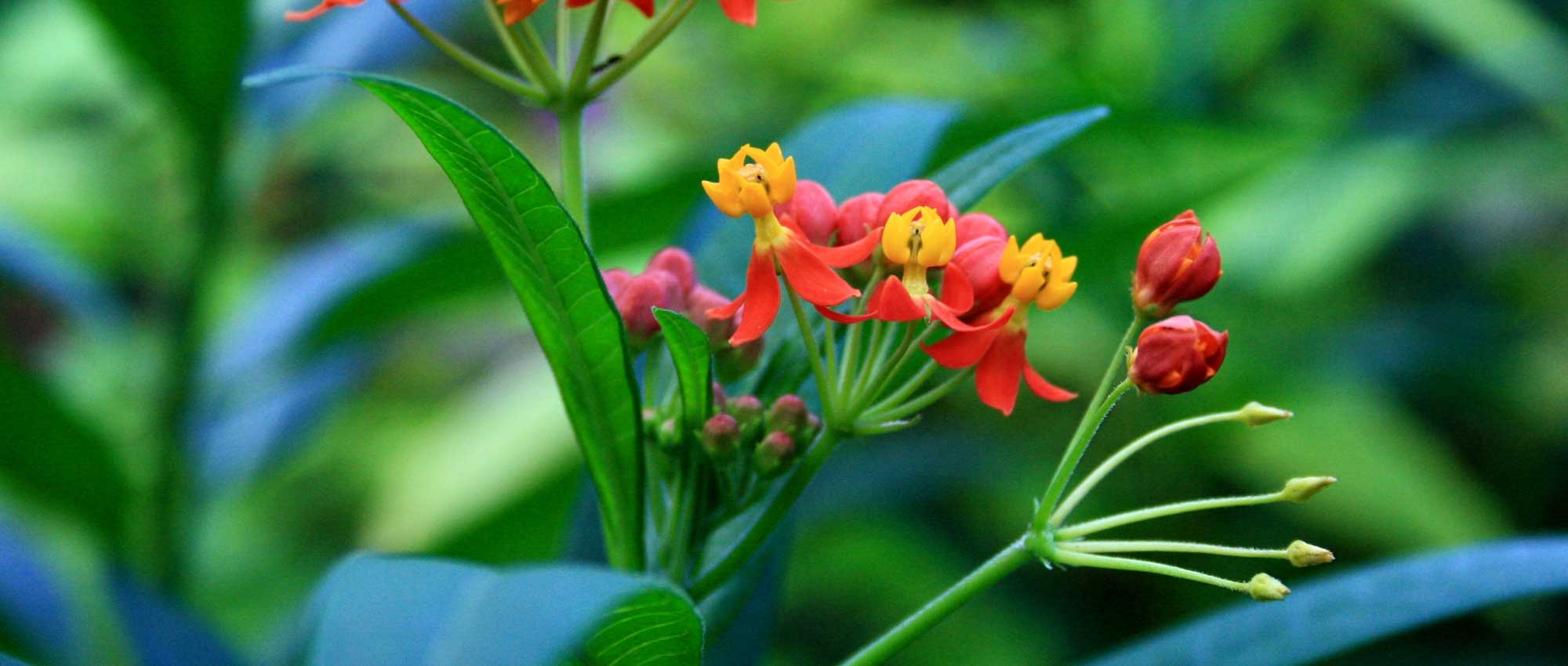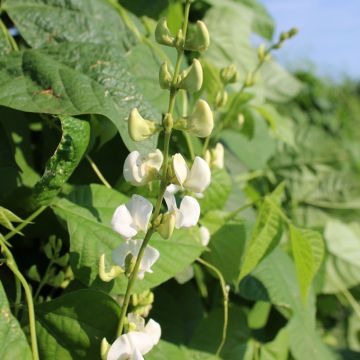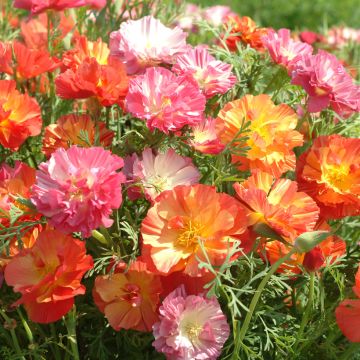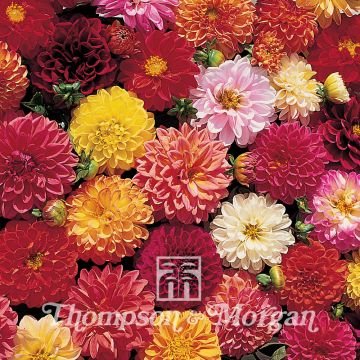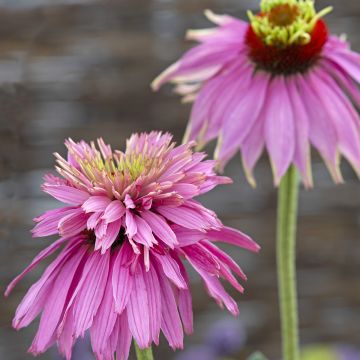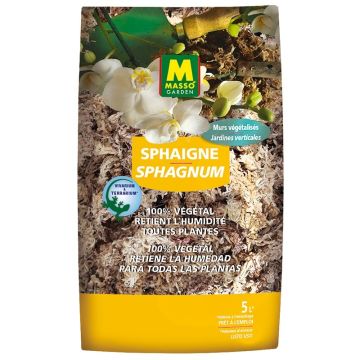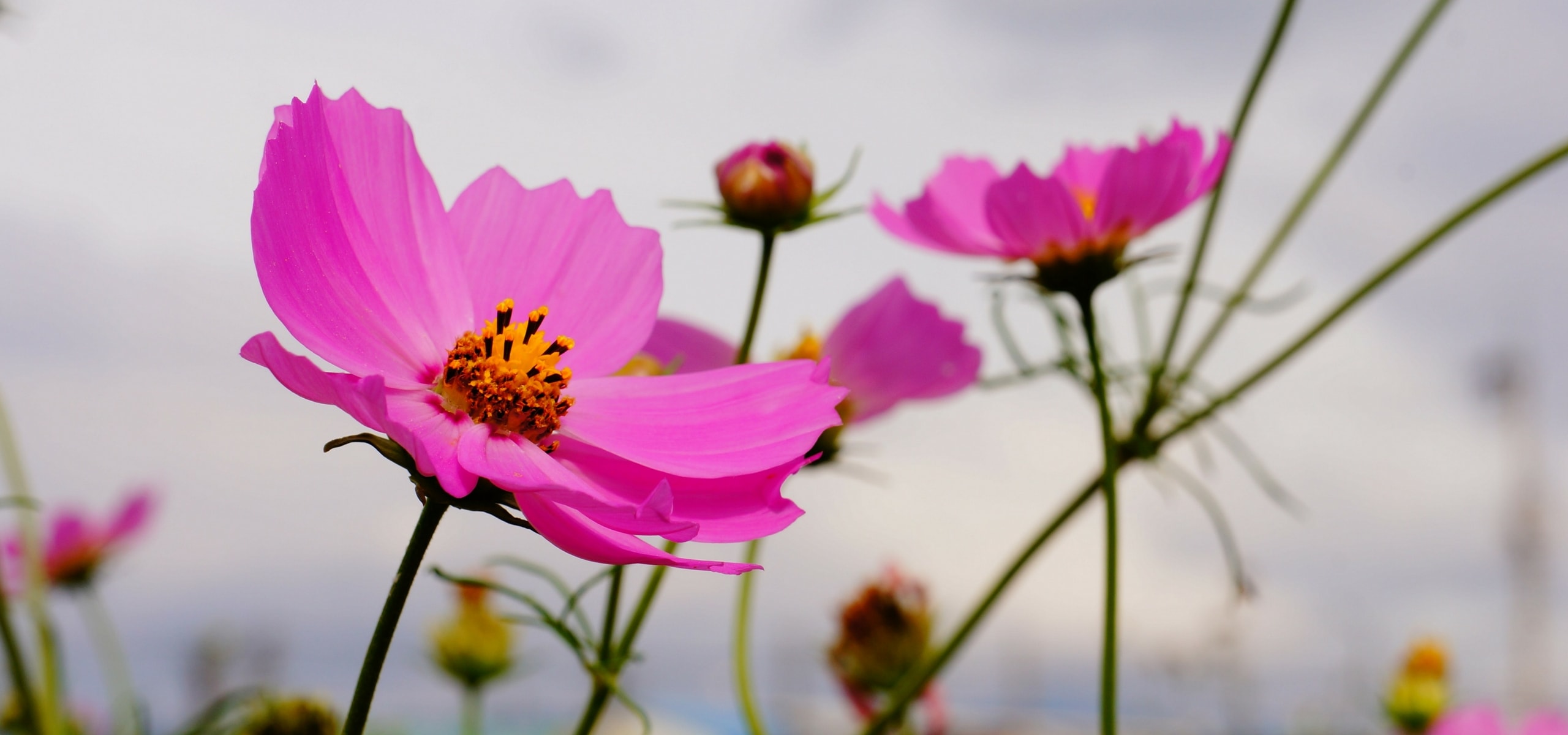

Tweedia Heavenly Blue - seeds
Tweedia Heavenly Blue - seeds
Oxypetalum coeruleum Heavenly Blue
Tweedia, Blue Star, Southern Star
Special offer!
Receive a €20 voucher for any order over €90 (excluding delivery costs, credit notes, and plastic-free options)!
1- Add your favorite plants to your cart.
2- Once you have reached €90, confirm your order (you can even choose the delivery date!).
3- As soon as your order is shipped, you will receive an email containing your voucher code, valid for 3 months (90 days).
Your voucher is unique and can only be used once, for any order with a minimum value of €20, excluding delivery costs.
Can be combined with other current offers, non-divisible and non-refundable.
Home or relay delivery (depending on size and destination)
Schedule delivery date,
and select date in basket
This plant carries a 6 months recovery warranty
More information
We guarantee the quality of our plants for a full growing cycle, and will replace at our expense any plant that fails to recover under normal climatic and planting conditions.
Does this plant fit my garden?
Set up your Plantfit profile →
Description
Tweedia 'Heavenly Blue' is an improvement of the botanical species also known as Oxypetalum coeruleum. It is distinguished by its longer flowering period and even bluer flowers. The flowers are small, but numerous and renewed for long months. The small star-shaped flowers are an exceptional sky blue, rare in the plant kingdom. This compact shrub, with a trailing habit and velvety green-grey foliage, thrives in full sun, in well-drained soil, even dry. It is not very hardy and should be grown in a pot anywhere other than south or west coastal areas.
The Blue Star, or Southern Star, in Latin Oxypetalum coeruleum is a member of the former Asclepiadaceae family (like the Stephanotis known to us as a houseplant), now integrated into the Apocynaceae family (which includes the Nerium, or Oleander, and Periwinkles). These are often toxic plants, but in Oxypetalum, only the sap can be irritating to the skin. This genus, which has only one species, is native to South America (Brazil and Uruguay).
In its native habitat, this herbaceous plant forms a small evergreen shrub with a creeping or semi-climbing habit, barely reaching a maximum height of 90 cm (35in), sometimes even only 30 cm (12in). Under our climates, the growth is a bit slow at first, but the plant eventually becomes more bushy during the season, you can pinch it occasionally to encourage branching. The velvety stems, which only turn woody at the base, remaining herbaceous in the upper part, are adorned with opposite leaves. They have an original shape, like a spearhead, and are very velvety like the stems, ranging in colour from grey-green to medium green. They measure from 3 to 6 cm (1 to 2in) long and 1 to 3 cm (0 to 1in) wide and are borne on short petioles measuring from 0.2 to 1.2 cm (0 to 1in).
The flowers can be solitary or grouped in umbels of 3 to 5, and measure from 2 to 2.5 cm (1in) in diameter. They are star-shaped and composed of five petals of an almost unreal sky blue, reputed to be even more intense in 'Heavenly Blue' than in the botanical species. This variety, introduced in 1986 by the Sahin company, has established itself in the ornamental market because of the duration of its flowering, which extends from July (sometimes even June) until October, or even until the first frost.
If the plant is grown in a pot and overwintered indoors, the foliage will persist on the plant, outdoors, it will dry up when the temperature drops a few degrees below zero, and the crown will be destroyed at around -8 or -10°C (17.6 or 14°F).
Tweedia 'Heavenly Blue' will fit well in sunny rock gardens, in well-drained soil, and even dry. You can combine it with other ornamental plants with similar needs, such as Euphorbia myrsinites, or Myrtle Spurge, with its sculptural bluish foliage, enhanced by a spring flowering that creates a harmony of chartreuse green and golden hues. Those who like strong contrasts can add a few clumps of Armeria maritima Düsseldorfer Stolz, a Sea Thrift with low, dense tufts covered in small, vibrant pink flowers during the same period as the Oxypetalum. And to play with foliage, Berberis thunbergii Lutin Rouge will be ideal with its miniature size, only 60 cm (24in) in all directions, and its red to purple foliage, which is adorned with delicate yellow flowers in May and June.
Flowering
Foliage
Plant habit
Safety measures
Botanical data
Oxypetalum
coeruleum
Heavenly Blue
Apocynaceae (Asclepiadaceae)
Tweedia, Blue Star, Southern Star
Tweedia caerulea, Gothofreda coerulea, Tweedia coerulea
South America
atteintescutaneomuqueuses
Cette plante peut provoquer l'apparition de réactions cutanées indésirables, une atteinte des yeux, ou des difficultés respiratoires si elle est ingérée.
Ne la plantez pas là où de jeunes enfants peuvent évoluer. Evitez tout contact avec la peau: privilégiez l'emploi de gants pour la manipuler. En cas de contact, lavez-vous soigneusement les mains et rincez abondamment à l'eau la zone concernée. Lavez les vêtements entrés en contact. En cas de réaction cutanée, contactez votre médecin ou le centre antipoison le plus proche de chez vous. En cas d'atteinte étendue ou de difficultés respiratoires, appelez immédiatement le 15 ou le 112.Pensez à conserver l'étiquette de la plante, à la photographier ou à noter son nom, afin de faciliter le travail des professionnels de santé.
Davantage d'informations sur https://plantes-risque.info
Other Flower seeds
View all →Planting and care
Sow in pots or trays, in a warm place (20 to 25°C (68 to 77°F)), lightly covering the seeds with vermiculite. Germination usually takes place between 21 and 28 days, but can sometimes extend to more than three months. When the young plants have 5 to 6 leaves, pinch them to encourage branching. Transplant them into individual pots or directly into the garden after the last frost and when the soil is well warmed.
Culture: we advise you to use gloves when handling it, as its stems contain a latex that can be irritating to the skin. This Tweedia appreciates full sun and requires well-drained soil that does not retain too much water. It prefers neutral to slightly acidic soils. In heavy and clayey soil, its crown can rot so plant it on a mound or a raised bed with gravel-enriched soil. To help it establish roots, water it regularly during the first few weeks, but let the soil dry out a bit between waterings. Occasional watering may also be necessary during the first summer if it is very dry and hot. Once established, the plant can tolerate dry conditions. If you provide it with support, it will behave as a climbing plant. Otherwise, it will remain shrubby, forming a small clump up to 70 cm (28in) high.
Sowing period
Intended location
Planting & care advice
This item has not been reviewed yet - be the first to leave a review about it.
Haven't found what you were looking for?
Hardiness is the lowest winter temperature a plant can endure without suffering serious damage or even dying. However, hardiness is affected by location (a sheltered area, such as a patio), protection (winter cover) and soil type (hardiness is improved by well-drained soil).

Photo Sharing Terms & Conditions
In order to encourage gardeners to interact and share their experiences, Promesse de fleurs offers various media enabling content to be uploaded onto its Site - in particular via the ‘Photo sharing’ module.
The User agrees to refrain from:
- Posting any content that is illegal, prejudicial, insulting, racist, inciteful to hatred, revisionist, contrary to public decency, that infringes on privacy or on the privacy rights of third parties, in particular the publicity rights of persons and goods, intellectual property rights, or the right to privacy.
- Submitting content on behalf of a third party;
- Impersonate the identity of a third party and/or publish any personal information about a third party;
In general, the User undertakes to refrain from any unethical behaviour.
All Content (in particular text, comments, files, images, photos, videos, creative works, etc.), which may be subject to property or intellectual property rights, image or other private rights, shall remain the property of the User, subject to the limited rights granted by the terms of the licence granted by Promesse de fleurs as stated below. Users are at liberty to publish or not to publish such Content on the Site, notably via the ‘Photo Sharing’ facility, and accept that this Content shall be made public and freely accessible, notably on the Internet.
Users further acknowledge, undertake to have ,and guarantee that they hold all necessary rights and permissions to publish such material on the Site, in particular with regard to the legislation in force pertaining to any privacy, property, intellectual property, image, or contractual rights, or rights of any other nature. By publishing such Content on the Site, Users acknowledge accepting full liability as publishers of the Content within the meaning of the law, and grant Promesse de fleurs, free of charge, an inclusive, worldwide licence for the said Content for the entire duration of its publication, including all reproduction, representation, up/downloading, displaying, performing, transmission, and storage rights.
Users also grant permission for their name to be linked to the Content and accept that this link may not always be made available.
By engaging in posting material, Users consent to their Content becoming automatically accessible on the Internet, in particular on other sites and/or blogs and/or web pages of the Promesse de fleurs site, including in particular social pages and the Promesse de fleurs catalogue.
Users may secure the removal of entrusted content free of charge by issuing a simple request via our contact form.
The flowering period indicated on our website applies to countries and regions located in USDA zone 8 (France, the United Kingdom, Ireland, the Netherlands, etc.)
It will vary according to where you live:
- In zones 9 to 10 (Italy, Spain, Greece, etc.), flowering will occur about 2 to 4 weeks earlier.
- In zones 6 to 7 (Germany, Poland, Slovenia, and lower mountainous regions), flowering will be delayed by 2 to 3 weeks.
- In zone 5 (Central Europe, Scandinavia), blooming will be delayed by 3 to 5 weeks.
In temperate climates, pruning of spring-flowering shrubs (forsythia, spireas, etc.) should be done just after flowering.
Pruning of summer-flowering shrubs (Indian Lilac, Perovskia, etc.) can be done in winter or spring.
In cold regions as well as with frost-sensitive plants, avoid pruning too early when severe frosts may still occur.
The planting period indicated on our website applies to countries and regions located in USDA zone 8 (France, United Kingdom, Ireland, Netherlands).
It will vary according to where you live:
- In Mediterranean zones (Marseille, Madrid, Milan, etc.), autumn and winter are the best planting periods.
- In continental zones (Strasbourg, Munich, Vienna, etc.), delay planting by 2 to 3 weeks in spring and bring it forward by 2 to 4 weeks in autumn.
- In mountainous regions (the Alps, Pyrenees, Carpathians, etc.), it is best to plant in late spring (May-June) or late summer (August-September).
The harvesting period indicated on our website applies to countries and regions in USDA zone 8 (France, England, Ireland, the Netherlands).
In colder areas (Scandinavia, Poland, Austria...) fruit and vegetable harvests are likely to be delayed by 3-4 weeks.
In warmer areas (Italy, Spain, Greece, etc.), harvesting will probably take place earlier, depending on weather conditions.
The sowing periods indicated on our website apply to countries and regions within USDA Zone 8 (France, UK, Ireland, Netherlands).
In colder areas (Scandinavia, Poland, Austria...), delay any outdoor sowing by 3-4 weeks, or sow under glass.
In warmer climes (Italy, Spain, Greece, etc.), bring outdoor sowing forward by a few weeks.






























